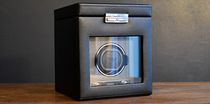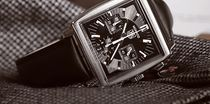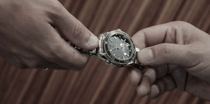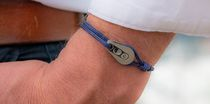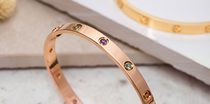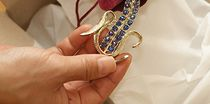Clear all filters
A short history of the automatic watch
At the origin of the automatic watch, there is one man, perhaps even two. The first, the one who is often described as the inventor of this type of watch, is a Swiss watchmaker named Abraham Louis Perrelet. Based in the Locle region in the 18th century, he devoted himself to improving the mechanisms of timepieces, until he was presented in 1777 as "the inventor of watches that are wound by the movement of the wearer". Abraham Louis Perrelet called them "shaking watches". Some, however, dispute the Swiss watchmaker's invention of this type of mechanical watch and attribute it to another tireless researcher. In 1778, Hubert Sarton, a watchmaker from Liège, filed an automatic rotor watch with the Royal Academy of Sciences. The debate is not closed, but it is indeed the end of the eighteenth century that saw the birth of a watch requiring no manual winding: an oscillating weight turns with the movements of the wrist and comes to tension a spring that gives its energy to the watch. The first models of pocket watches, as found in the early 19th century, were hardly worn, however, because of their fragility: the spiral spring tended to break, the teeth to wear out, and the sealed case prevented any other possibility of winding the watch. Watchmakers, notably Swiss and English, nevertheless worked to perfect what was later called the perpetual watch.
The Rolex Oyster Perpetual, the great reference
It is actually necessary to wait for the beginning of the 20th century and the advent of the wristwatch to see the mechanisms really progress, the movements become less fragile, an automatic watch being, by nature, very solicited. In 1924, the English watchmaker John Harwood integrated a ball bearing that moves back and forth in the movement. Two years later, a first mass-produced wristwatch under the name Rolls launched the modern automatic watch. The watchmaking houses Fortis and Blancpain joined the adventure. Another would soon follow, and that was Rolex, which filed a patent for a self-winding rotor in the early 1930s. The luxury brand also has a sense of communication: in 1927, the English swimmer Mercedes Gleitze had crossed the sleeve with the first waterproof watch on her wrist, the Rolex Oyster ("as watertight as an oyster"), which will become from 1933 the Rolex Oyster Perpetual. This automatic watch, waterproof as well as dustproof, was a watchmaking revolution, which became known by equipping the pilots of the first airplane expedition over Everest. Even today, Rolex remains a great reference in terms of automatic watches, and its Oyster Perpetual is still in the catalog of the brand, after of course different evolutions. For example, it is currently equipped with the caliber 3230, a mechanical movement with automatic winding by Perpetual rotor that makes the watch a model of precision, resistance to shocks and magnetic fields, but still autonomy with 70 hours of power reserve. This iconic watch from Rolex, with its classic look, is however often supplanted, among lovers of automatic timepieces, by another model, the Rolex Submariner, launched in the 1960s.
How to choose your automatic watch
This diver's watch does indeed make the most sought-after automatic watch models. But in this field, other watchmaking Houses have largely managed to pull their weight. One naturally thinks of the Geneva-based luxury watch brand Patek Philippe, with sporty lines like the Nautilus or Aquanaut, or the very elegant Calatrava. The choice of an automatic watch is primarily a matter of taste and style. Originality can thus come from Audemars Piguet's Royal Oak collection, with its octagonal bezel and eight hexagonal screws, the square Cartier Tank, inspired by World War I tanks, or even Jaeger-Lecoultre's Reverso and its Art Deco aesthetic. There are in fact hundreds of models of luxury self-winding watches, and it can indeed be tricky to choose - except for a real favorite or a favorite brand, that is. Generally speaking, you should know that an automatic watch has a larger case than a quartz watch, for example. The diameter of a men's watch measures at least 39 mm and the thickness often oscillates between 15 and 20 mm. With the exception - there are always some - of ultra-thin models like the Altiplano by Piaget or more recently the Octo Finissimo by Bulgari (3.9 mm!). The water-resistance of the watch and of course the number of watch complications are part of the selection criteria. As for the dial glass, you should know that a high-end watch is systematically equipped with a sapphire glass, which is largely more resistant than a mineral glass.

